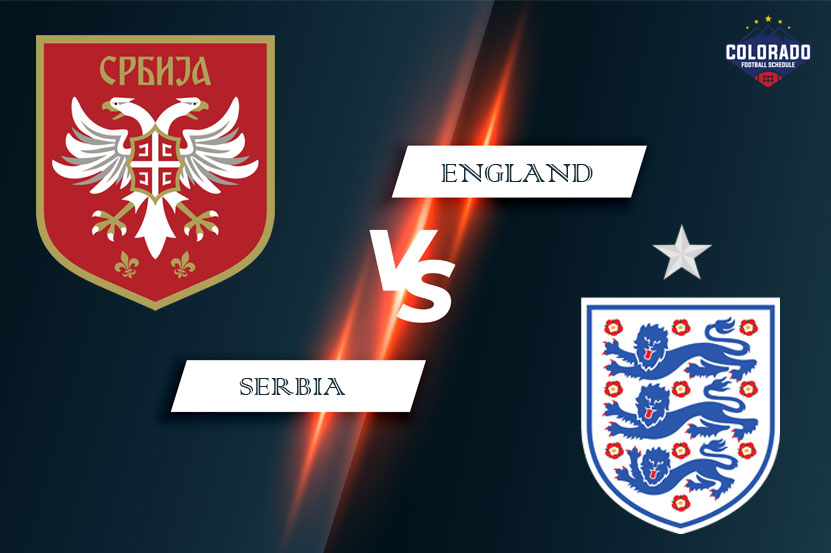England and the Balkan football tradition have crossed paths for more than eight decades. While today’s fixtures carry the Serbia flag, earlier squads played under names such as Yugoslavia and later Serbia & Montenegro. For clarity, we’ll follow the chronological order of games that most directly connect to modern-day Serbia, sprinkling in historic context so the story makes sense.
The Yugoslav Years (1940s-1990s)
Early Encounters
- December 1939, Belgrade – The very first recognised clash came in a wartime charity friendly. England sent an FA XI rather than a full senior side, yet the game sowed the seed for a lively back-and-forth relationship in the post-war decades.
Growing Respect
Through the 1950s and 60s, Yugoslavia’s quick, technical style contrasted sharply with England’s more direct approach. Press coverage in both countries framed every contest as a culture shock: hot-blooded Balkan passing versus stiff-upper-lip British grit. Mutual fascination, not hostility, drove the rivalry.
A European Classic – 5 June 1968
In Florence, the two nations collided in the European Championship semi-final. England were reigning World Champions after 1966, but Yugoslavia’s Dragan Džajić struck an 86-minute winner at Stadio Comunale, sending Sir Alf Ramsey’s side into the third-place playoff. The late goal, chipped first-time over Gordon Banks, still ranks among Yugoslavia’s most cherished moments.
The Florence defeat stung English supporters: it was the first time their golden generation tasted tournament elimination. For Yugoslav fans, it confirmed that the country could out-think as well as out-play the heavyweights. Many Serbian pundits today still reference Džajić’s cool finish when discussing big-game temperament.
Takeaway: The 1968 semi-final carved a psychological groove that lingers. Even modern Serbian squads talk about harnessing the “Florence spirit” when a big scalp is required.
Transition to Serbia & Montenegro (2003 Friendly)
Political Shifts, Football Rebrands
The breakup of Yugoslavia in the 1990s led to several successor teams. By 2003, the badge read “Serbia & Montenegro,” a joint federation that would last only three more years. England, under Sven-Göran Eriksson, invited the new-look side for a warm-up friendly ahead of Euro 2004 qualifying.
3 June 2003 – Walkers Stadium, Leicester
- Score: England 2 – 1 Serbia & Montenegro
- Scorers: Steven Gerrard (13′), Joe Cole (68′) – Nenad Jestrovic (44′)
Gerrard’s opener calmed the home crowd, but Jestrovic levelled on the stroke of half-time after sloppy marking. Joe Cole’s curling winner twenty minutes from time preserved England’s unbeaten run that spring. Even so, the visitors impressed neutral observers with slick one-touch play despite operating under a fresh flag.
Why It Mattered
Although “only” a friendly, this game introduced English fans to talents such as Dejan Stanković and Nemanja Vidić, who would later excel in Europe’s top leagues. For Serbia, it signalled they could hold their own despite political upheaval back home.
The Breakaway to Modern Serbia (2006-2023)
Serbia became an independent football nation in 2006. Yet, surprisingly, fixtures against England dried up. They never shared a qualifying group, and draw luck kept them apart at the World Cups. For almost two decades, supporters on both sides waited for the next direct contest.
Key subplot: During this lull, English clubs snapped up Serbian talent—Vidić at Manchester United, Branislav Ivanović at Chelsea, Aleksandar Mitrović at Newcastle/Fulham—ensuring familiarity even without head-to-head internationals.
Road to UEFA EURO 2024
By 2023, Gareth Southgate’s England were brimming with attacking depth: Harry Kane, Bukayo Saka, Jude Bellingham, Phil Foden. Dragan Stojković’s Serbia boasted savvy veterans like Dušan Tadić plus the potent strike duo of Luka Jović and Mitrović.
When the draw placed them in Group C, Serbian media hailed it as a “Florence rematch” of sorts—despite the generations separating the squads. English outlets, meanwhile, warned that Serbia’s aerial power could unsettle a back line still finding post-Maguire rhythm.
Matchday – 16 June 2024, Arena AufSchalke, Gelsenkirchen
Atmosphere
A sea of St. George’s crosses mingled with red-blue-white tricolours. Thousands travelled from both nations, though chaotic tram links around the ground later triggered headlines about stranded fans.
How the Game Unfolded
- 13′ – Goal: Jude Bellingham ghosted into the box, guiding Bukayo Saka’s deflected cross past Predrag Rajković. England 1-0.
- Middle third: Serbia pushed higher, with Sergej Milinković-Savić testing Jordan Pickford from range. England adopted a conservative block, relying on Declan Rice to sweep loose balls.
- 70′ onward: Ivan Ilić slide-ruled passes for Vlahović, yet John Stones and Marc Guéhi held firm. Harry Kane rattled the bar on one counter.
Final Whistle
England 1 – 0 Serbia. Southgate’s men pocketed three points, but Serbian fans felt the margin flattered England; expected goals stats were close. Post-match, Stojković bristled at Tadić’s hint that the coach should have started him.
Talking Points
- Bellingham’s maturity: At 20, he dictated tempo and chipped in the decisive header.
- Serbia’s aerial threat neutralised: Stones’ positioning denied Mitrović his trademark back-post nod-downs.
- Game-management debate: England reined in risk after the break, sparking pundit grumbles about over-caution—yet three points are three points.
Comparing the Two Modern Clashes
| Year | Venue | Result | England Key Player | Serbia Key Player | Narrative |
|---|---|---|---|---|---|
| 2003 | Leicester | 2-1 ENG | Steven Gerrard | Dejan Stanković | Friendly litmus test for a young England core |
| 2024 | Gelsenkirchen | 1-0 ENG | Jude Bellingham | Sergej Milinković-Savić | High-stakes group opener; Serbia argued they deserved more |
(Table included for quick reference; numbers come from the match reports above.)
Themes That Echo Through Time
- Late Drama vs Early Strikes
Florence 1968 swung on an 86-minute dagger; Gelsenkirchen 2024 turned on a 13-minute flash. The storyline flipped, but tension remained constant. - Technical Midfield Craft
From Džajić to Stanković to Milinković-Savić, Serbia’s backbone is ball control and clever angles. England, for their part, evolved from bulldog spirit to possession-savvy operators like Bellingham and Rice. - Political Undercurrents
Shifting national borders never stopped football ties. In fact, each rebrand (Yugoslavia → Serbia & Montenegro → Serbia) seemed to refresh curiosity on both sides. - Shared Club Footprints
Premier League exposure blurs national lines. Many Serbian stars learned English press conferences, and British weather while earning stripes at Old Trafford or Stamford Bridge, shrinking cultural gaps.
What Lies Ahead?
- World Cup 2026 qualifying draw takes place in late 2025. If the ping-pong balls align, we could get two competitive clashes over a home-and-away set.
- Friendly whispers: The English FA reportedly seeks autumn fixtures against physically strong European sides to toughen youngsters—Serbia ticks that box.
- Player crossover: Keep an eye on 23-year-old Serbian playmaker Ivan Ilić, rumoured for a Premier League move. He could spark fresh storylines if the nations cross paths soon.
Closing Thoughts
From a war-era charity kick-about to a glitzy Euro showdown, England and Serbia (in all their historical forms) have woven a rich, if sporadic, tapestry. Results tilt slightly toward the Three Lions, yet each clash reminds us that styles, politics, and generations shift—while the basic thrill of international football stays ageless.
Whether you cheer for Bellingham’s vision or Milinković-Savic’s elegance, the next chapter feels overdue already. And if history holds true, expect drama right to the final whistle.


Leave a Reply